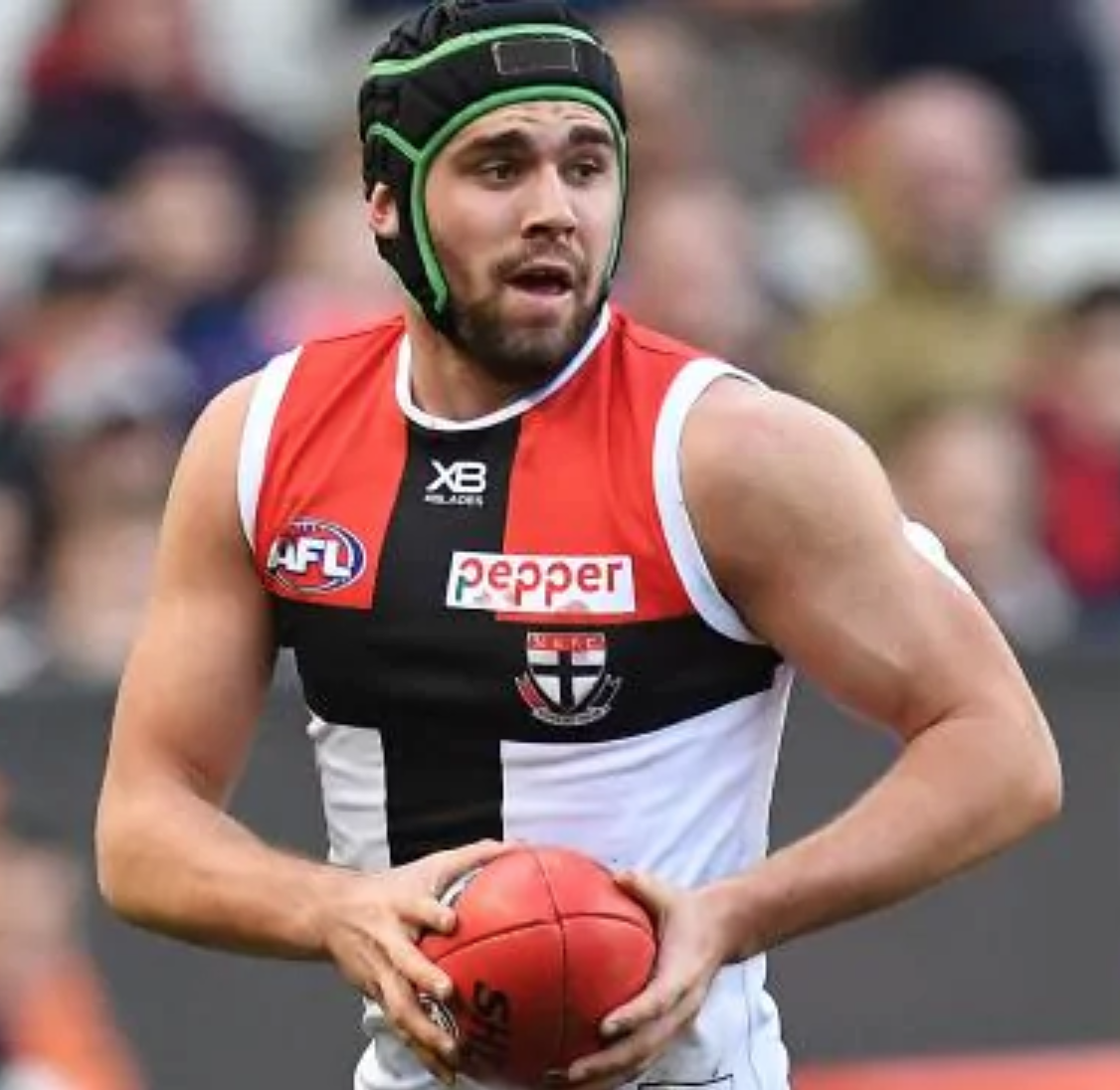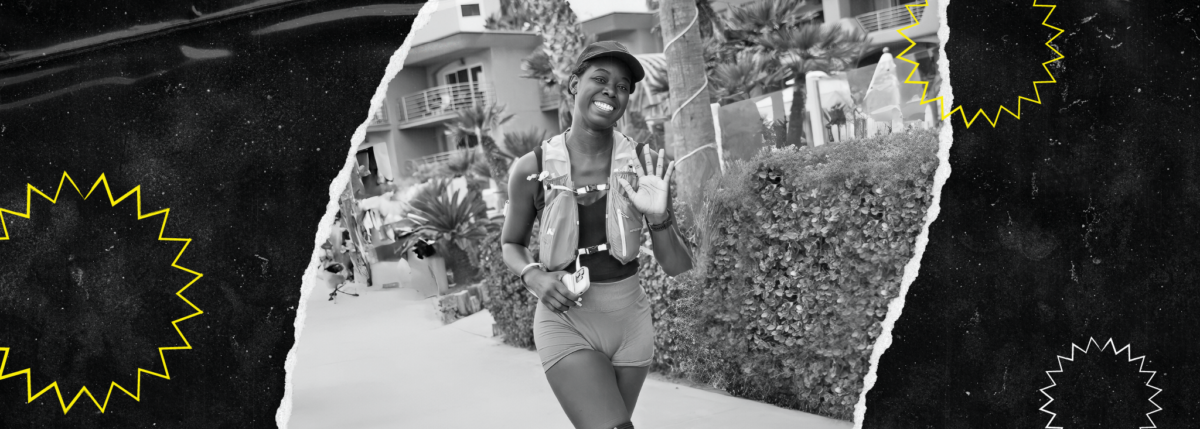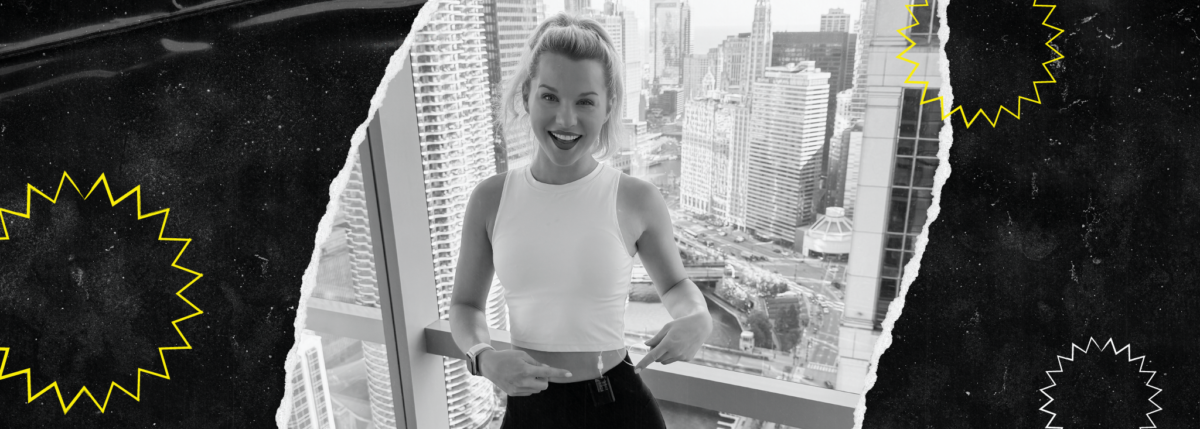Paddy McCartin: T1D in the AFL
Written by: Beyond Type 1 Editorial Team
6 minute read
November 27, 2018
Paddy McCartin is an Australian Rules Football player who was diagnosed with type 1 diabetes at the age of eight. He was the number one overall pick in the 2014 AFL Draft and spoke with Beyond Type 1 about the game and how he manages his type 1 diabetes (T1D) with the demands of being a professional athlete.
When were you first diagnosed with Type 1 diabetes?
I got diagnosed with diabetes in 2004 actually—I was 8 years old, so I’ve had it for 14 years. It’s a bit of a weird process. I was quite young, obviously and I just got really sick over a number of weeks. I sort of started becoming really thirsty and then you go to the toilet a lot and then gradually over a three week period —I play AFL, Australian Rules Football—I stopped playing footy. I would hardly go to school and then I lost about 8 kilos. Finally, I went to the hospital and had a few blood tests and they told me I had T1D.
Were you already playing Aussie Rules football before you were diagnosed?
I started playing Aussie Rules when I was about six, but obviously that was just juniors. I was quite young, I wasn’t professional at all. I’ve always loved it. My dad played and my mom was really into her sports as well so I grew up around sporting. When I got diagnosed when I was 8, the first thing I said to my parents and sort of said to myself as well was, ‘I never want diabetes to stop me from doing anything.’ I think footy was the first thing in that. That’s something I feel like could have been potentially hindered or taken away from me because of my diabetes but I’ve never let it. Since then, nothing’s really changed. I still have to manage it really, really closely. There are not many other people who play professional Aussie Rules with type 1 diabetes so that’s a bit of a challenge at times. But I can’t really remember playing without it.
 Tell me about that transition, when you first started playing Aussie Rules with Type 1. How did you manage your diabetes?
Tell me about that transition, when you first started playing Aussie Rules with Type 1. How did you manage your diabetes?
So initially, I was on just injections. I think back then I was on Lantus Levemir for a while. Then, I was about 13 when the pump first came out and my doctor in Melbourne, said that he thought the pump could be a good option to have a go at. I used it but I was really sort of immature with it. I didn’t use it overly well and I think I went through a bit of a phase in my early teens where I sort of really resented having diabetes and sort of tried my best to ignore it at times. I think I had a really bad experience with the pump to start with and moved back onto just needles, four injections a day. When I turned 16 and footy started to get a bit more serious, doctors and other people started to suggest that potentially going back onto the pump might be a good option again. For a bit more flexibility with my day to day life and the sport that I’m playing, I moved back onto the pump when I was 16 and have been onto it since then and it’s been brilliant and I’m really enjoying that. It gives me a lot more flexibility to give myself different dosages over different times when I’m playing, when I’m training and when I’m relaxing as well. It gives me a bit more flexibility.
Then I’ve got the FreeStyle Libre as well, which is a little swab with its own in the back of my arm. I can use my swab to check my blood sugar levels and then it tells me whether it’s going up or down and what it’s been over a period of time, so that’s been really good as well because playing AFL, it’s really hard to be able to check your blood sugars during a game. You can’t just take a finger prick when you’re out on the ground, you’ve got to sort of come off or wait, so with the FreeStyle Libre, there’s water boys and things like that and they can come out and give it to you. I can check it in the middle of the game. It only takes a second. Playing sport and professional sport with type 1 diabetes can be really challenging but I think some of the technological advancements even in the last four or five years have definitely made it a lot easier to manage.
How did your family support you growing up?
They have been incredible. I think you speak to any person with T1D and their main support is always their family. My mom and dad and my brothers have been no different, especially my mom. They’ve supported me. They’ve never ever stood in my way or tried to stop me from doing anything because of type 1 diabetes. I can honestly say that if I didn’t have my family, I would be nowhere near where I am now or even playing professional sports. I think that’s been a really critical part in my development as a person that has type 1 diabetes for sure.
Can you go into some more detail about what it’s like during the games? Do you have a pregame ritual and how are you managing your blood sugar during it?
Yeah, so for me since I first started playing AFL and footy at a bit more serious level when I was younger. My blood sugars react to adrenaline… I get really high and my blood sugars spike a lot. So, before games, I have to set sort of temp basals with my pump, which means I change my insulin level over the course of an hour to keep my blood sugar a bit more steady.
So, the four or five hours before I play are really important to me so I don’t go into a game feeling sick or lethargic or how you feel when you have high blood sugar. I have to keep a really close eye on that. Generally, every week I’ll eat the same thing, the night before a game. The more you play, the more you get used to having a routine for each scheduled time that you play. During the games, as I said before, I’ve got the water boy or the trainer who has my FreeStyle Libre so he brings that out to me when I need it and also, we’ve got professional dietitians and doctors and physios at the club as well. They’re all over it too. They have stuff on the sidelines for me—they have lollipops, glucose gels and even all this stuff in case I do have high blood sugar, like a glucagon or things like that all on the sidelines.
Have you ever had any close calls or scary moments during a game or practice?
Similar to in the NFL, or the NBA, we have a preseason. In that preseason, for us, it contains a lot of really tough running sessions where we might sort of do 10 to 14 kilometers in one session and then do weights and stuff afterwards. It’s quite physically taxing. In my second year, I collapsed on a run due to hypoglycemia.
So that was probably one of the worst episodes I’ve had while I’ve been playing professionally and that was really scary for me. I think probably a bit of a wake-up call as well to everyone at the club. We probably weren’t as on top of it as a group as we could have been. That was somewhat due to me not being probably transparent enough and sort of being worried what people might think of my diabetes or think of me. That was a really bad moment in one sense but in another it was good—it sort of opened our eyes up a little bit as well and made us a bit more transparent with one another about what was happening.
Since then, I’ve generally been pretty good. We’ve got a lot of things in place to sort of stop those things from happening as well. My blood sugar is not always going to be perfect and I think that’s something that when I’ve spoken to people and when they’ve asked me for some advice or what I’d do, I’ve said that it’s impossible to have perfect diabetes. There are going to be times that you have high blood sugar or times when you are low, but it’s just trying to find as much balance as you can between those times and just working out why those things have happened or what’s going on, then find ways to try and prevent them.

Do you think your teammates know more about diabetes now?
Absolutely, and I think probably it’s the same as any working environment. Generally, you are a bit more quiet and probably take a bit more time to speak up. I think over the last year or so, I have definitely become a lot more open. I think all the players and all the staff knew about it but they probably didn’t have a really great understanding. I’ve tried to really make it a goal of mine to be able to spread the message as much as I can about sort of the nuts and bolts of diabetes, not just the lollipops and what everyone thinks they know about it. The sort of ins and outs of it and what can happen and the effects, what effects low blood sugar can have and high blood sugar can have. I think I’m very lucky — I’ve got a really supportive group of teammates and staff around me that are really aware now and know what’s going on there and are really supportive of me.
I feel quite lucky that I’m in a position where I have a bit of a platform to be able to speak about diabetes and spread a bit of awareness. That is why I’m really excited about speaking with you guys. I think that in Australia, the awareness and the advocacy of type 1 diabetes is at quite a low level. I think that’s just because generally in Australia, we don’t know about these kinds of organizations like Beyond Type 1. I think at times type 1 diabetes can be quite a lonely illness. You can live day-to-day looking like you’re fine but potentially you might not feel that way. I think the more awareness we can create, the better off everyone will be.
Have you gotten any feedback from fans who have diabetes?
I get quite a few messages on Instagram or people sending letters through to the club. Sometimes it can be parents saying their youngster has just been diagnosed and I send a letter letting them know that it’s all going to be fine. A lot of the times, I get people inboxing me or messaging me on Facebook, or sending messages to the club, asking about different things, how I handle things. I’ve got the FreeStyle Libre on my arm, and a lot of people are really interested in that because that’s only just come out in Australia. It is important to spread the message that it can be really difficult at times and does take a lot of effort to just live a normal life. If we can create a few more support networks in Australia for people who are feeling a bit down, I think that could be really beneficial.
What are your plans for the future?
I plan to play for as long as I can. Generally, if someone has a really good career in AFL, they might play until they’re 32 or 33 — I’m 22 at the moment so hopefully I’ve got a lot of footy left in me. In the AFL, the main goal is to win a premiership so, I’d love to win a premiership with the Saints.
After that, I’m really passionate about type 1 diabetes and creating networks and systems for people to be able to lead a better life through more support and things like that. That is something that I am really passionate about as well and I think even just having the opportunity to be able to talk to an organization like Beyond Type 1, is something makes me really excited and something I feel very passionate about.
This interview has been edited and condensed for clarity.

Author
Beyond Type 1 Editorial Team
This piece was authored collaboratively by the Beyond Type 1 Editorial Team. Members of that team include Editorial Manager Todd Boudreaux, Program Manager Mariana Gómez, Director of Brand Communications Dana Howe and Editorial Associate Jordan Dakin.
Related Resources

Danica Collins not only prepared for one of the most challenging physical events of her...
Read more

Beyond Type 1 is spotlighting inspiring athletes with type 1 diabetes as they prepare for...
Read more

On November 3, 2024, Taylor Rindfleisch of Chicago laced up her running shoes for the...
Read more

